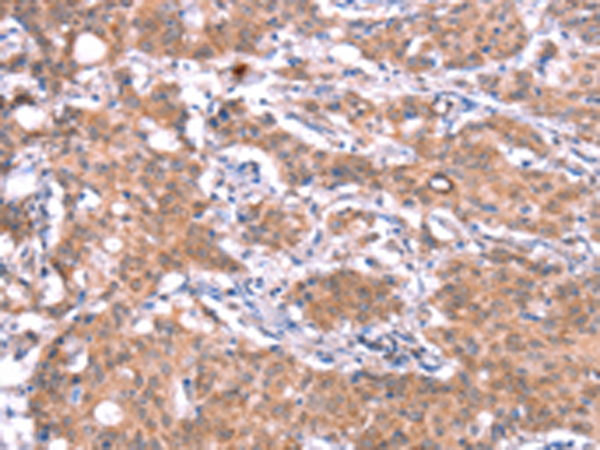

| WB | 咨询技术 | Human,Mouse,Rat |
| IF | 咨询技术 | Human,Mouse,Rat |
| IHC | 1/25-1/100 | Human,Mouse,Rat |
| ICC | 技术咨询 | Human,Mouse,Rat |
| FCM | 咨询技术 | Human,Mouse,Rat |
| Elisa | 1/1000-1/2000 | Human,Mouse,Rat |
| Aliases | GAS11 |
| Host/Isotype | Rabbit IgG |
| Antibody Type | Primary antibody |
| Storage | Store at 4°C short term. Aliquot and store at -20°C long term. Avoid freeze/thaw cycles. |
| Species Reactivity | Human, Mouse, Rat |
| Immunogen | Synthetic peptide of human GAS8 |
| Formulation | Purified antibody in PBS with 0.05% sodium azide and 50% glycerol. |
+ +
以下是关于GAS8抗体的3篇参考文献,包含文献名称、作者及摘要概括:
---
1. **文献名称**:*GAS8 and its splice variant regulate ciliary motility by modulating the stability and assembly of axonemal dynein arms*
**作者**:Horani A, et al. (2018)
**摘要**:该研究利用GAS8抗体进行免疫荧光和蛋白质印迹实验,揭示了GAS8蛋白在纤毛轴丝动力臂组装中的关键作用,并发现其剪接变体异常与原发性纤毛运动障碍(PCD)相关。
2. **文献名称**:*The growth arrest-specific protein 8 (GAS8) inhibits cell proliferation and promotes apoptosis in colorectal cancer*
**作者**:Li Y, et al. (2019)
**摘要**:通过GAS8抗体的免疫组化分析,研究发现结直肠癌组织中GAS8表达下调,且其过表达可抑制癌细胞增殖并诱导凋亡,提示其作为肿瘤抑制因子的潜在作用。
3. **文献名称**:*Functional characterization of GAS8 variants in human ciliated cells*
**作者**:Wallmeier J, et al. (2020)
**摘要**:该研究利用GAS8抗体检测患者呼吸道上皮细胞的蛋白表达,结合CRISPR-Cas9技术验证GAS8突变导致纤毛功能障碍,为诊断纤毛相关疾病提供了分子依据。
---
以上文献均涉及GAS8抗体的实验应用,涵盖纤毛生物学、癌症机制及疾病模型研究。如需扩展,可进一步检索PubMed或Google Scholar以获取更多相关研究。
The Growth Arrest-Specific 8 (GAS8) gene encodes a protein involved in cellular processes such as ciliary function, cell motility, and signaling pathways. It belongs to the GAS gene family, initially identified for their upregulation during growth arrest. The GAS8 protein interacts with the microtubule-associated Nexin-Dynein regulatory complex, playing a critical role in the structure and function of motile cilia and flagella. Dysregulation of GAS8 has been linked to primary ciliary dyskinesia (PCD), particularly subtype PCD2. characterized by impaired ciliary movement and respiratory/fertility issues.
GAS8 antibodies are essential tools for studying its expression, localization, and molecular interactions. They are widely used in techniques like Western blotting, immunofluorescence, and immunohistochemistry to investigate GAS8's role in ciliopathies, cancer, and cellular signaling. For instance, reduced GAS8 expression has been observed in certain cancers, suggesting tumor-suppressive functions. Commercially available antibodies target specific epitopes, but validation is crucial due to potential cross-reactivity with homologous proteins or isoforms.
Recent studies highlight GAS8's involvement in Hedgehog signaling and its potential as a biomarker. However, challenges remain in standardizing antibody specificity across experimental models. Research using GAS8 antibodies continues to uncover its mechanistic contributions to diseases, emphasizing its importance in both basic and clinical contexts.
×